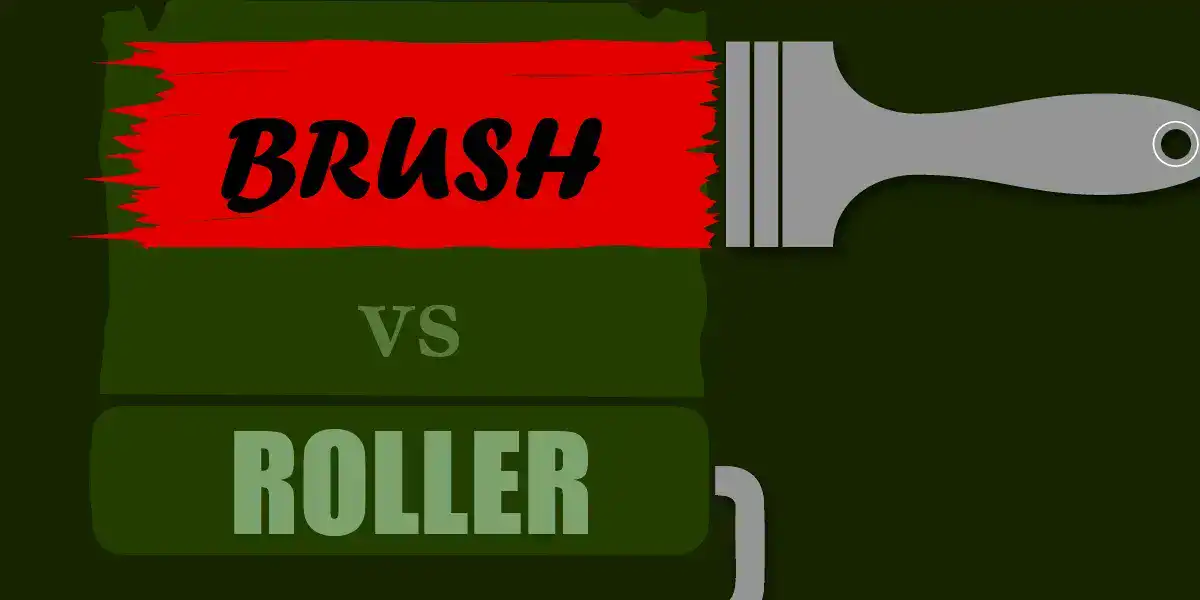Even a simple paint job can be ruined by the wrong choice of tools.
When should you pick a brush or a roller to lay the paint, and which type should it be?
These small decisions can dramatically alter the results of your DIY painting project. The right tool can give you buttery-smooth walls and a pro-level finish. The wrong one? More like teenage acne.
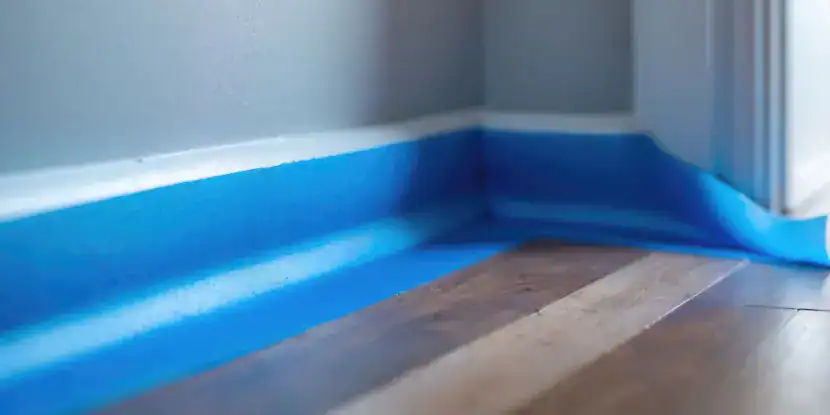
A baseboard masked before painting.
The Case for the Paintbrush
A paintbrush offers precision and control. It’s ideal for detailed work and tight spaces where a roller can’t reach. If you need to paint with accuracy, go with a brush.
When to Use a Paint Brush
- Cutting in: This involves creating a clean line of paint along edges, corners, and trim. A brush is essential for painting ceilings, baseboards, and around windows or door frames.
- Detailed Surfaces: A brush gives you the control for intricate work like painting window muntins, furniture details, or decorative molding.
- Textured Surfaces: Brushes are great for working paint into uneven surfaces like rough-sawn wood or heavily textured walls, ensuring complete coverage.
- Touch-Ups: Small scuffs or missed spots are easily fixed with a few dabs from a brush.
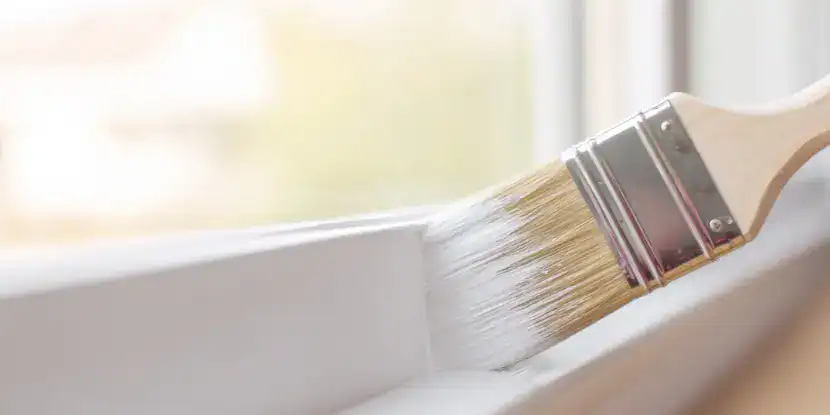
A paintbrush is ideal for tight spaces where a roller can’t reach.
Types of Paint Brushes
The right brush depends on the paint you’re using and the surface you’re painting.
Bristle Material
- Natural Bristles: Made from animal hair (like hog bristle), these are best for oil-based paints, stains, and varnishes. The natural “split ends” of the bristles, called “flags,” hold more paint and apply it smoothly. Avoid using them with water-based paints, since they absorb water, become limp, and lose shape.
- Synthetic Bristles: Made from nylon, polyester, or a blend of the two, synthetic bristles are the all-purpose choice for most paint jobs. They’re durable and easy to clean, and they don’t absorb water in latex and acrylic paints. High-quality synthetic brushes can also be used with oil-based paints.
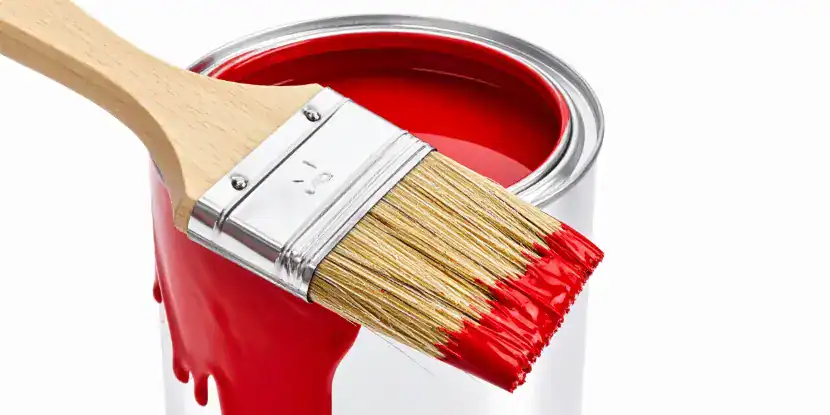
A quality bristle paintbrush will hold more paint and last longer than a cheap brush.
Brush Shape & Size
- Angled Sash Brush: The angled bristles offer excellent control for sharp, straight lines along trim and corners. They typically come in widths from 1.5 to 3 inches.
- Flat Brush: These brushes have straight bristles for painting larger, flat surfaces like cabinet doors or panels. Wider flat brushes (3-4 inches) can cover a larger area quickly.
- Foam Brush: These are inexpensive, disposable options best for small touch-ups, craft projects, or applying stains and clear finishes. They don’t hold much paint and can tear easily, so they aren’t suitable for large or rough surfaces.
A quality brush will have densely packed bristles, feel balanced in your hand, and won’t shed. Good brushes will pay off in much greater durability and a smoother finish.
The Role of the Paint Roller
A roller is designed to cover large, flat surfaces like walls and ceilings. When speed and a smooth, uniform finish are priorities, it’s the tool for the job.

A roller is designed to cover large, flat surfaces like walls and ceilings.
When to Use a Paint Roller
- Large, Flat Surfaces: Walls, ceilings, and even some floors are perfect candidates for a roller, which distributes paint quickly and evenly over a large area.
- Applying Primer: A roller is the fastest way to apply a primer base coat to drywall or other large surfaces.
- Smooth Finishes: Rollers don’t leave brush strokes, laying a consistent texture across the entire surface.
Roller Cover Materials
- Synthetic Covers: Made from nylon or polyester, these are the most common and are suitable for all paint types, especially latex paints.
- Natural Fiber Covers: Made from mohair or sheepskin, these are best for oil-based paints and provide a very smooth finish.
- Blended Covers: A mix of polyester and wool, these covers offer a good balance of durability and a smooth finish.
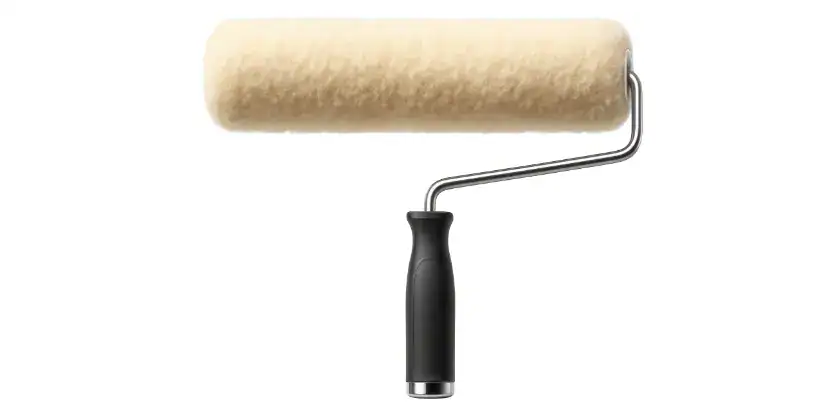
Natural fiber rollers are best for oil-based paints and provide a very smooth finish.
Roller Nap (Thickness)
The nap is the thickness of the roller cover’s fibers. The texture of your surface determines the nap length you should use.
- 1/4″ to 3/8″ Nap: This short nap is for smooth surfaces like drywall, metal doors, or cabinets. It leaves a thin, even coat of paint.
- 1/2″ Nap: This is the most common, all-purpose choice for interior walls and ceilings with a light to medium texture.
- 3/4″ to 1″ Nap: For textured surfaces like stucco, brick, or rough-sawn wood. The longer fibers hold more paint and can reach into crevices.
A high-quality roller cover will have a dense nap and a sturdy core that won’t deform. Cheaper covers can shed fibers into your paint, leaving a fuzzy, uneven finish.
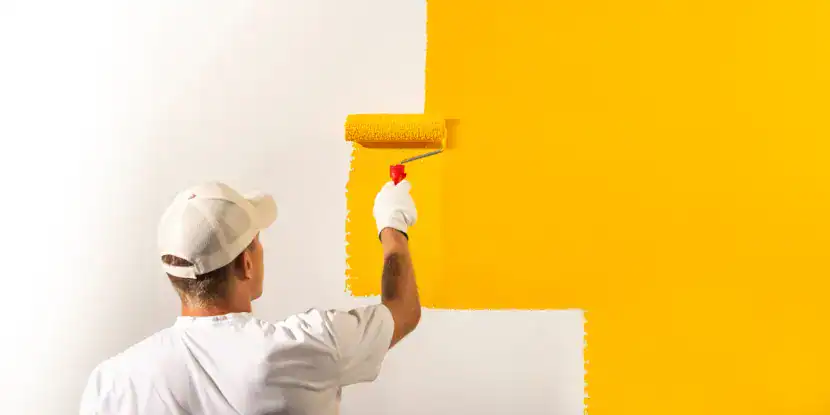
For best coverage, start with a “W” or “N” pattern and work while the paint is still wet.
The Best Method: Using Both
For most interior painting projects, the question isn’t “brush or roller?” but “when do I use each?” The best approach combines the strengths of both tools.
- Start with the Brush: Begin by “cutting in.” Use an angled sash brush to paint a 2-3 inch wide strip along all the edges: where the wall meets the ceiling, around baseboards, and next to window and door frames.
- Switch to the Roller: While the cut-in areas are still wet, use your roller to paint the main part of the wall. Overlap onto the brushed sections to blend the textures and create a seamless finish.
FAQs: Paintbrush vs. Roller
Q: Can I paint a whole room with just a brush?
Only if you’re a glutton for punishment. The task would be time-consuming and difficult, and you’d likely leave brushstrokes.
Q: What’s the best way to clean my paintbrushes and rollers?
For water-based (latex) paint, wash your tools with warm, soapy water until the water runs clear. Use a brush comb to remove paint from the base of the bristles. For oil-based paint, you’ll need mineral spirits or a solvent. Squeeze out excess paint, then work the solvent into the brush or roller until clean.
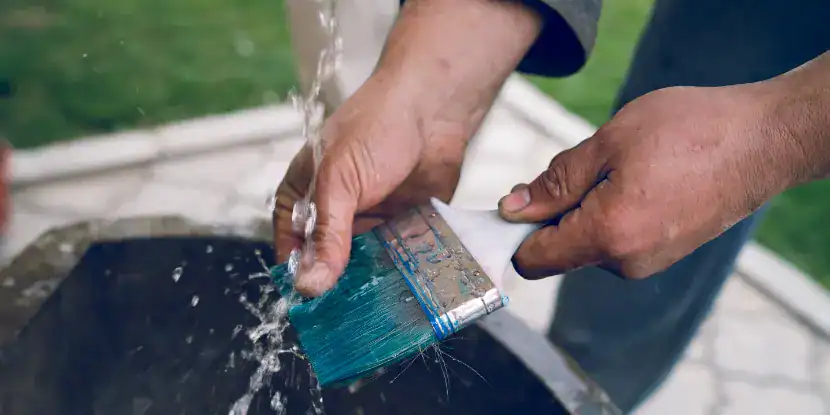
To clean water-based, wash your tools with warm, soapy water until the water runs clear.
Q: Do I need a different brush for primer and for paint?
You can use the same brush for both, but you must clean it thoroughly between applications. Having separate tools is more efficient if you’re working quickly, but it’s not a requirement.
Q: Why are some paint brushes so much more expensive?
The price reflects the quality of the materials and construction. Expensive brushes use higher-quality bristles (natural or synthetic) that are shaped and flagged for better paint holding and a smoother release. They also have more bristles packed into the ferrule (the metal band), which prevents shedding and helps the brush hold its shape.
Q: How do I avoid roller marks on my walls?
Keep a wet edge by overlapping each new stroke onto the previous wet one. Don’t press too hard, which can cause paint ridges at the roller’s edges. Apply the paint in a “W” or “N” pattern to distribute it evenly, then lightly roll back over the section from top to bottom to smooth it out.
Q: Can I reuse roller covers?
High-quality roller covers, especially those used with latex paint, can be cleaned and reused. Inexpensive, low-quality covers are disposable because they’re difficult to clean thoroughly and may not perform as well on a second use.
Q: What is a “ferrule” on a paintbrush?
The ferrule is the metal band that connects the bristles to the handle. A high-quality brush will have a ferrule made of a non-rusting metal like stainless steel securely attached to the handle.
Q: Should I use a paint tray or a 5-gallon bucket with a screen?
A paint tray is fine for smaller jobs. A 5-gallon bucket with a roller screen is more efficient for larger projects. It holds much more paint, reducing the need for refills, and a screen helps you load the roller evenly without oversaturation.

